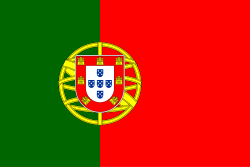Ai Weiwei Navigates Exile While Emphasizing Art Over Wealth
 Portugal
PortugalIn the summer of 2001, the small island of São Miguel in the Azores, Portugal, was engulfed in chaos when hundreds of packages of uncut cocaine began washing up on its shores. The situation spiraled after teenagers, mistaking the white powder for chalk, unknowingly introduced the drug into their community. The event marked a significant turning point for the island, which had previously experienced little drug-related crime.
Initial reports indicated that locals discovered around half a metric tonne of cocaine worth approximately £40 million. Many individuals took advantage of the influx, collecting and selling the drug at alarmingly low prices, which contributed to a rapid rise in addiction among the island's youth. Inspector Jose Lopes, who worked on the case, noted that cocaine was sold in "beer glasses for €5 each," significantly undermining its value.
The influx of cocaine was linked to an Italian smuggler named Antonino Quinci, who had diverted to São Miguel due to a storm while attempting to transport the drug from Venezuela to Spain. He originally concealed the cocaine in a cave; however, the storm caused many of the packages to surface and beach themselves.
As addiction rates soared, with reports of children as young as 12 using cocaine, health services were overwhelmed. Within a month, overdose cases began to appear, leading to avoidable deaths within the community. The initial quiet nature of São Miguel was rapidly replaced by a vibrant but destructive nightlife centered around drug use.
Despite attempts to address the problem and the decriminalization of all drugs in Portugal in July 2001, the impacts of this "cocaine wave" were profound and long-lasting. Local resources for rehabilitation and mental health support have remained insufficient, leading to the persistence of addiction in the area.
Current reports indicate that the island is also now grappling with newer synthetic drugs, leading to an ongoing cycle of substance abuse among residents. The legacy of the summer of 2001 continues to cast a long shadow over São Miguel, fundamentally altering its social fabric.
 Portugal
Portugal Portugal
Portugal Portugal
Portugal